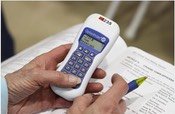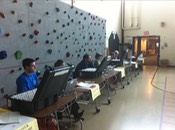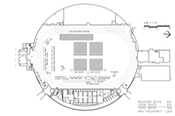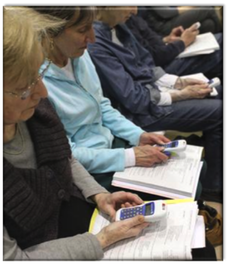
The primary user experience is in the keypads. The keypads provide you with voting speed, accuracy, privacy and these factors have a calming affect on the audience which allows the voters to make better decisions. It has been said that the keypads become part of the voter.
"We are ready to vote" says the Moderator…
"Get ready to vote when the voting window opens by seeing the light bulb go ON."
"When the light goes ON you will have 30 seconds to vote and make your final decision. Press number ONE to vote Aye or Press TWO to vote Nay - when the light goes ON."
"Open the voting window NOW"…
The technology allows you to vote or change your mind and vote again during the open window of time.
(The 30 seconds is an arbitrary amount of time that has been chosen by consideration with the moderator and the ELVIS committee. This amount of time as compared to 15 seconds was asked as a test question this year. The voters wanted to keep 30 seconds.)
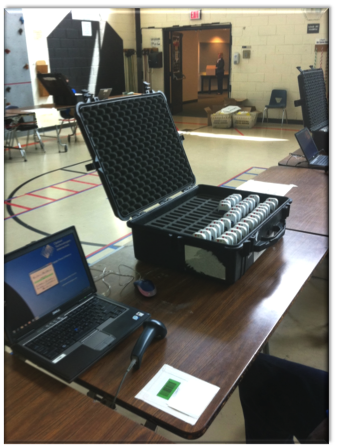
The check-in process was an innovation between Wayland's ELVIS committee and our vendor Options Technologies Interactive.
The check-in process is an enhancement and addition over the paper box-check system that we have now. The state provided paper checklist system has a unique alphanumeric bar-code for each registered voter. This bar-code is scanned by hand at the time of check-in and registered into a welcome computer (which is just a laptop with special software). The voter is associated with the keypad by an external bar-code on the keypad BUT the actual vote is associated with an internal MAC address of the keypad.
Checking out of town meeting is as simple as dropping your keypad into one of the many buckets held by volunteers or at various tables at the exit of the hall. The keypads are later scanned out and deactivated.
This is important: No mapping is kept or maintained between the votes and the people holding the keypads.
After the vote of a motion or article is done and we are a few seconds past the possibility of an audit then the specific voting keypad record is disposed of. The privacy is the vote is provided by the keypad during voting and its maintained after the fact. No public record is created and no 'Freedom of Information Act' request could obtain that record since there is none that exists.
For OPEN town meeting - this is the way the technology has been designed and setup.
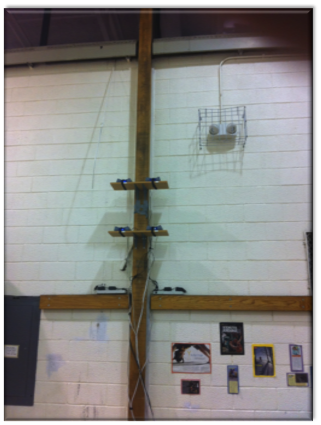
The inconspicuous element of the technology are the receivers. These small boxes are custom mounted to convenient locations in the voting hall.
Each receiver provides a channel which services hundreds of keypads. Redundant receivers are more recently provided per channel as an improvement to the performance of the system.
The receivers are hardwired by ethernet to the voting computers and welcome stations.
This is important: The entire system is NOT connected to the internet.
The fact that the system is only a local area system helps enhance its security. The keypads are wireless and use a frequency band which is similar to WiFi but it is NOT a WiFi protocol. The radio transmission is frequency hopping and spread spectrum. All transmissions are encrypted in both software and hardware.
Security
Although nothing can ever be guaranteed as 'hackproof', we can be assured that multiple levels of security are built in to the entire system which is isolated from the outside world.
The keypads provide final vote latched feedback to the voter and can be compared to the voting memory for a 'called for' audit over any number of keypads to add additional securities of proper functionality - if so desired.
The ELVIS committee has dedicated itself to the logistics and security of using this technology for town meeting. The ELVIS committee town website contains a wealth of detailed documents for your further research.
